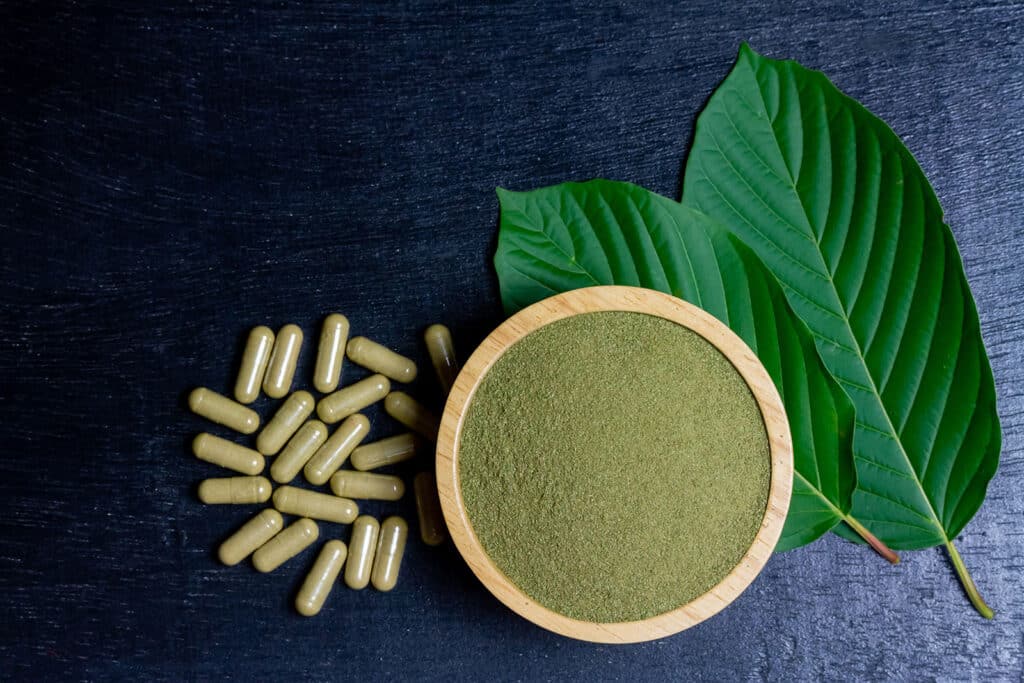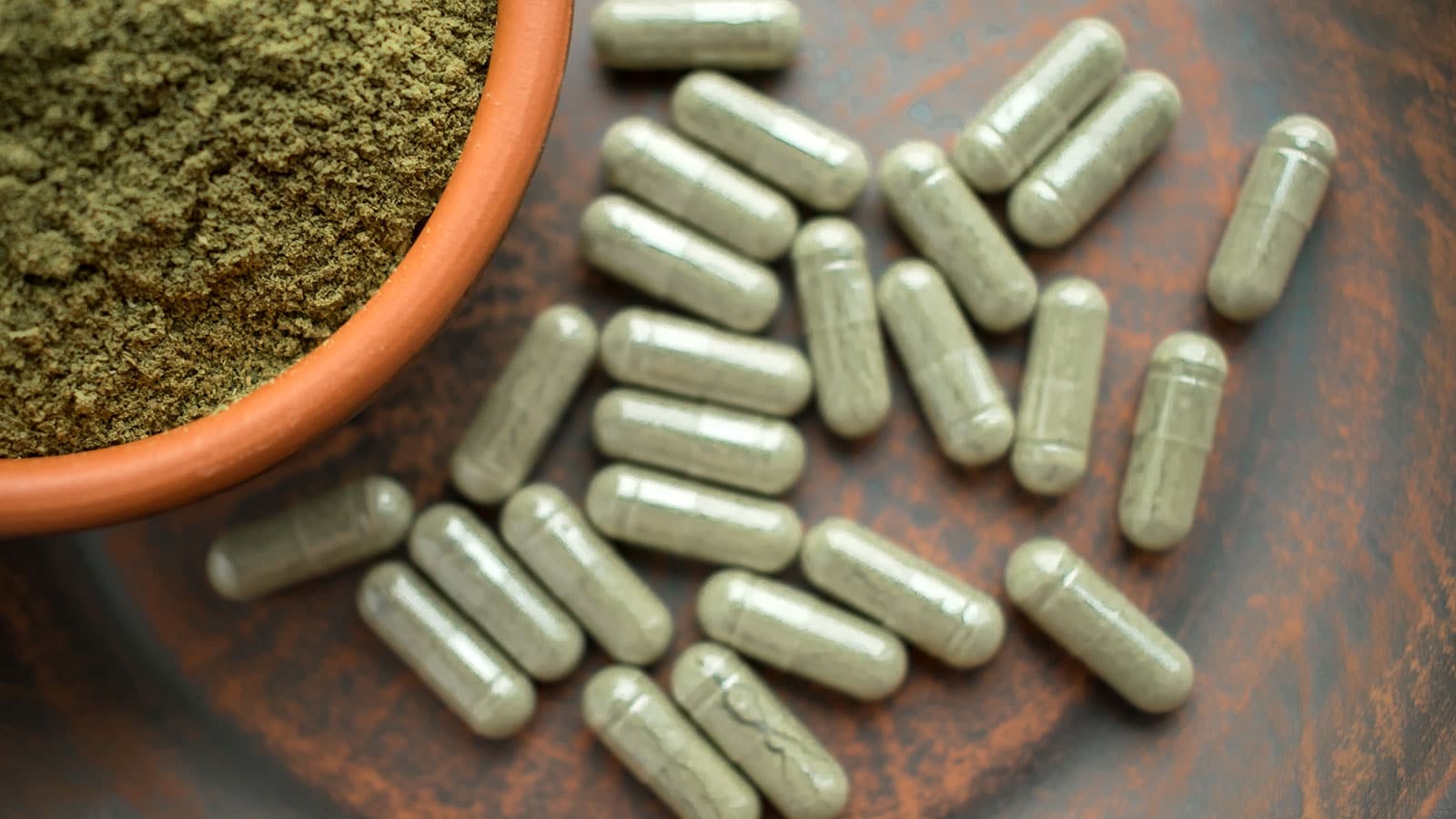West Palm Beach is famous for its exquisite beauty, but the ugliness of substance abuse seems to be infecting the city at an alarming rate. From alcohol to cannabinoids to opioids, the overdose rates are only getting higher.
Unfortunately, a substance known as kratom has become another threat over the last decade. Readily available for sale, marketed as safe, and often described as legal morphine, kratom comes with a long list of possible side effects that can easily end in death.
If you or someone you know is struggling with kratom addiction, understanding what kratom is, how it gets abused, how its abuse manifests, and how it’s treated can help you/them overcome this potentially fatal condition.
Table of Contents
What Is Kratom and What Does It Do?
Scientifically called Mitragyna speciosa, kratom is a type of tree that originates from Southeast Asia. The commonly available commercial kratom is the herbal extract of the leaves of the kratom tree.
The psychoactive compounds responsible for eliciting the effects of kratom are known as mitragynine and 7-hydroxy mitragynine. These chemicals have a pain-relieving action and are generally comparable to morphine.
The similarities between mitragynine compounds and opioid drugs’ effects are the reason why kratom is commonly used to alleviate withdrawal symptoms from heroin, codeine, morphine, fentanyl, and other opioids.
Additionally, people use kratom to ease anxiety, depression, cough, and many other conditions.
However, like the opioid class of drugs, mitragynine and 7-hydroxy mitragynine are accompanied by several serious safety risks. Also, there isn’t enough scientific evidence to support its mood enhancement or anti-fatigue benefits.
Is Kratom Addictive?
Research on kratom is still limited, so an official classification of kratom or mitragynine (and 7-hydroxy mitragynine) as an addictive drug is yet to be conducted.
That said, it’s widely observed that the patterns and effects associated with taking kratom mimic those of addictive drugs.
The notion of kratom being addictive is further supported by the fact that mitragynine and 7-hydroxy mitragynine activate the same receptors in the brain as opioids, although the effects are of lower intensity.
Not to mention, many individuals have reported experiencing mild to severe withdrawal symptoms after stopping the use of kratom.
As such, it’s safe to say that kratom has at least the potential of being an addictive drug.
The uncertainty and safety concerns surrounding kratom had some states ban the sale and use of kratom, including Alabama, Indiana, Wisconsin, Arkansas, and Vermont. Other states like Utah, Georgia, and Arizona restrict the use of this substance.
In July 2023, Florida joined the latter group in restricting the sale and distribution of kratom. The new law makes it illegal to sell any product containing the kratom herb to individuals younger than 21.
Breaking this law is considered a second-degree misdemeanor punishable by up to 60 days of jail time or up to a $500 fine.
Why and How Is Kratom Abused?
Kratom has pain-relieving, fatigue-reducing, and mood-enhancing effects.
People generally start using kratom to alleviate anxiety, depression, and stress. They take it to lift their spirit and gain more energy to “get up” and get things done.
However, after a while of using kratom, the dose you’re taking becomes no longer enough to produce the same “high” you’re after. You even begin to experience negative emotional and physical effects.
Consequently, individuals resort to consuming kratom in larger doses trying to achieve the high and avoid the withdrawal symptoms. This is recognized as physiological and psychological dependence.
Most people abuse kratom orally by ingesting an extract, capsule, or tablet. They may also chew the leaves, brew them to make tea, or dry and powder them to mix into food.
How Does Kratom Affect Health?
When consumed in small doses, kratom elicits stimulant effects. These include increased alertness, talkativeness, physical vigor, elevated heart rate, and pain relief. At high doses, kratom has the opposite effect and acts as a sedative.
The effects of kratom start manifesting after about five to 10 minutes from consumption. Reportedly, these effects can last up to five hours and become more intense the larger the amount taken.
That said, you should note that the effects of kratom vary according to multiple factors, including;
- The quantity ingested
- The method of consumption
- The frequency of use
- The product’s potency
- Interactions with other drugs in the person’s system
- The presence of any medical conditions
Kratom Side Effects
When used at high doses and/or over an extended period, kratom can reportedly cause adverse effects similar to those associated with opioid and stimulant drugs, such as;
- Dry mouth
- Nausea
- Vomiting
- Constipation
- Irritability
- Aggression
- Sweating
- Dizziness
- Drowsiness
- Trouble breathing
- Itching
- Abnormally high heart rate
- Elevated blood pressure
- More frequent urination
- Loss of appetite
- Weight loss, possibly to the point of anorexia
- Insomnia
- Tremors
- Spasms
- Seizures
- Confusion
- Hallucinations
- Delusion
Kratom Withdrawal Symptoms
More research is still required to accurately determine the spectrum of withdrawal symptoms caused by stopping the use of kratom. However, various studies and reports suggest that people do experience withdrawal symptoms from kratom, ranging from mild to severe such as;
- Cravings
- Abdominal crampings
- Fatigue
- Diarrhea
- Mood
- Anxiety
- Depression
- Hot flashes
- Sweating
- Nausea
- Vomiting
- Muscle aches
- Muscle spasms
- Watering eyes
- Runny nose
- Restless legs
- Insomnia
- Tremors
- Agitation
- Anger
- Sedation
Kratom Overdose
The Tampa Bay Times reports at least 587 deaths involving kratom overdose since 2013, about 50 of which were caused by consumption of kratom alone.
As with any recreational drug or pain medication, overdosing on kratom is possible. However, there haven’t been enough studies to determine a specific toxic dose for kratom in humans.

What Are the Available Options for Kratom Addiction Treatment?
Due to the similarities between the effects, withdrawal timeline, and withdrawal symptoms of kratom and opioid-like drugs, treatment for kratom addiction shares many of the guidelines for treating opioid addiction.
Medication-assisted Detoxification
To start addiction treatment, patients must go through a detoxification process to rid the body of the substance.
With kratom addiction, this process is accompanied by uncomfortable or painful symptoms. Medications are commonly used to ease those symptoms.
- How long does it last? Five to seven days.
- Who is it for? Any patient suffering from kratom addiction.
Inpatient Treatment
In these programs, patients stay in hospitals or medical facilities where they receive supervised 24/7 medical and behavioral treatment, as well as emotional and mental support.
- How long does it last? A minimum of three months.
- Who is it for? Severe cases of kratom addiction, including patients suffering from co-occurring mental disorders.
Residential Treatment Programs
These are similar to inpatient treatment but last for a shorter period. It also involves living in supervised establishments with constant medical care and psychological support.
- How long does it last? Up to three months.
- Who is it for? Patients suffering from highly to moderately severe cases of kratom addiction.
Partial Hospitalization Programs
PHPs are a middle ground between inpatient or residential treatment programs and outpatient treatment programs. It aims to prepare patients for handling the higher level of independence of outpatient therapy.
PHPs don’t involve 24/7 care, allowing patients to come in for a few hours and then go back home to their daily lives.
- How long does it last? Around one to three months.
- Who is it for? Patients suffering from highly to moderately severe cases of kratom addiction.
Intensive Outpatient Programs
This type of program offers an intensity between PHPs and outpatient treatment. It also aims to prepare patients for less supervision but over a shorter period than PHP.
- How long does it last? Around one to two months.
- Who is it for? Patients suffering from highly to moderately severe cases of kratom addiction.
Outpatient Treatment
This sort of treatment program offers the most flexibility to patients and typically follows the completion of a period of inpatient or residential therapy. It involves attending multiple therapy sessions during the week while living normally the rest of the time.
- How long does it last? A few weeks to a couple of months.
- Who is it for? Patients suffering from medium to low severity cases of kratom addiction.
Aftercare and Relapse Prevention
Aiming to maintain recovery and prevent relapses, aftercare planning includes support groups, family therapy, and counseling sessions among other strategies
- How long does it last? From a couple of weeks to lifelong.
- Who is it for? Patients who completed a treatment program and are looking to maintain their recovery.
Conclusion: Getting Help
Starting your recovery journey isn’t easy, but a better you is worth the effort. Seeking kratom addiction treatment is the only effective way you can avoid the potentially fatal impact of such dependence and get your life back on track.
If you or your loved one is suffering from kratom use disorder, don’t hesitate to reach out to our team at Allure Detox for help. We can guide you through your recovery journey and provide kratom addiction treatment immediately.
References
- https://www.deadiversion.usdoj.gov/drug_chem_info/kratom.pdf
- https://www.webmd.com/vitamins/ai/ingredientmono-1513/kratom
- https://www.dea.gov/sites/default/files/2020-06/Kratom-2020_0.pdf
- https://nida.nih.gov/research-topics/kratom
- https://www.mayoclinic.org/healthy-lifestyle/consumer-health/in-depth/kratom/art-20402171
- https://www.dea.gov/factsheets/kratom
- https://www.theguardian.com/us-news/2023/jul/30/florida-woman-kratom-damages-judgment
- https://project.tampabay.com/investigations/deadly-dose/kratom-overdose-deaths-florida-mitragynine-testing/
- https://palmbeach.floridahealth.gov/programs-and-services/OD2A/Data-About-the-Overdose-Epidemic/index.html
Published on: 2024-02-29
Updated on: 2024-02-29


